LG V30 Preview

Introduction
LG has just announced their brand new V30 device, and if you look at the total package, you start to wonder, “what do we need a G6 for now?” Embracing the curved, near-bezel-less design, the V30 is much sleeker than the V20 and G6, with specs and features that edge out both of these devices. We’ve spent some time with their preview device, and as such we can’t make solid conclusions yet, as things are subject to change. But until the official units are out, we figured we’d take a look and see: Is this the only phone LG needs?
Design
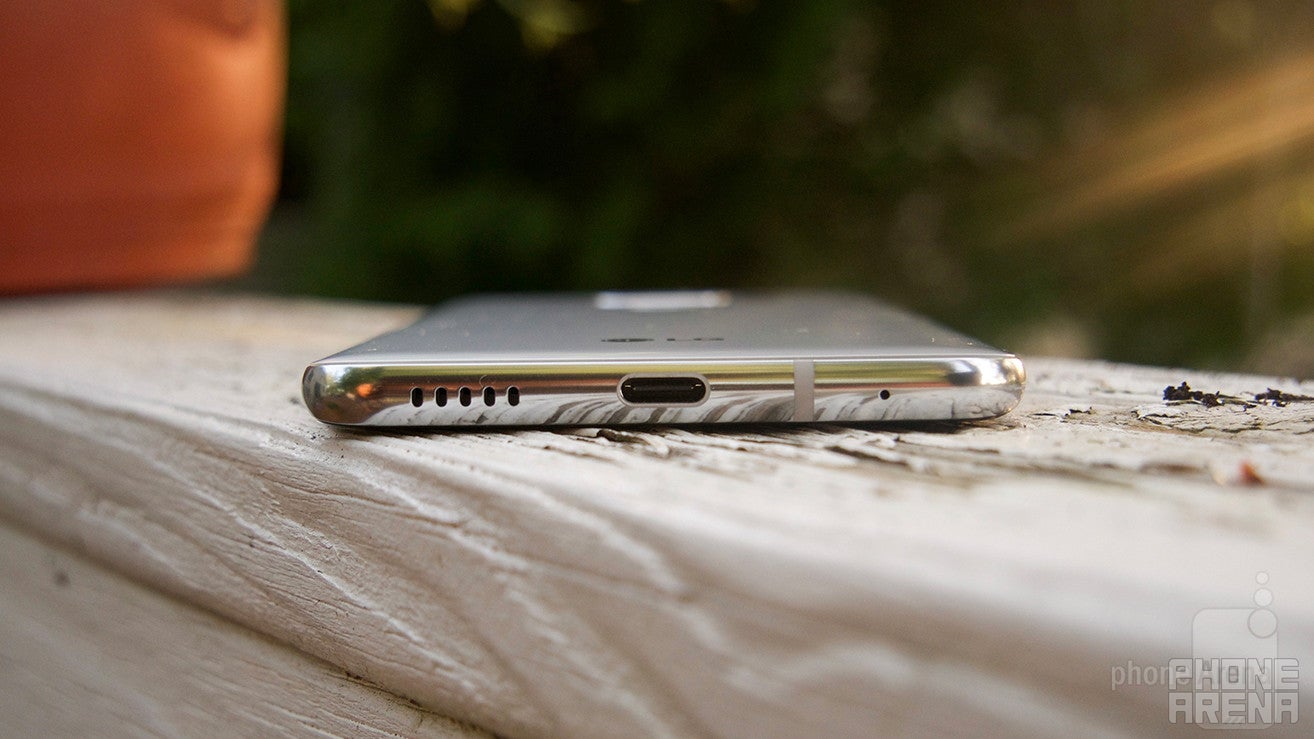
As mentioned, the IP68-rated V30 carries a sleeker, more polished look than its predecessor and even the G6. Smooth, curved edges envelope the beautiful 6-inch display, which borrows the G6’s rounded corners. Unlike the G6, the entire face is black, with all sensors tucked away in the thin black bezel that does exist, lending itself to a much more “infinity screen” type of look. Adding only a few millimeters in each dimension over the G6, the V30 feels completely comfortable in the hand, even with the nearly half-inch larger screen. The shiny, polished aluminum edges give the device a great feel, with a very premium fit and finish. Gorilla Glass 5 covers the front and back of the V30, while the back overlays the glass on top of a finely textured aluminum, creating a shiny but diffused look. The dual-camera setup protrudes slightly from the case, while the fingerprint sensor/lock button sits below it. It’s not a ground-breakingly innovative design, but a sexy, well-executed one nonetheless.
Display
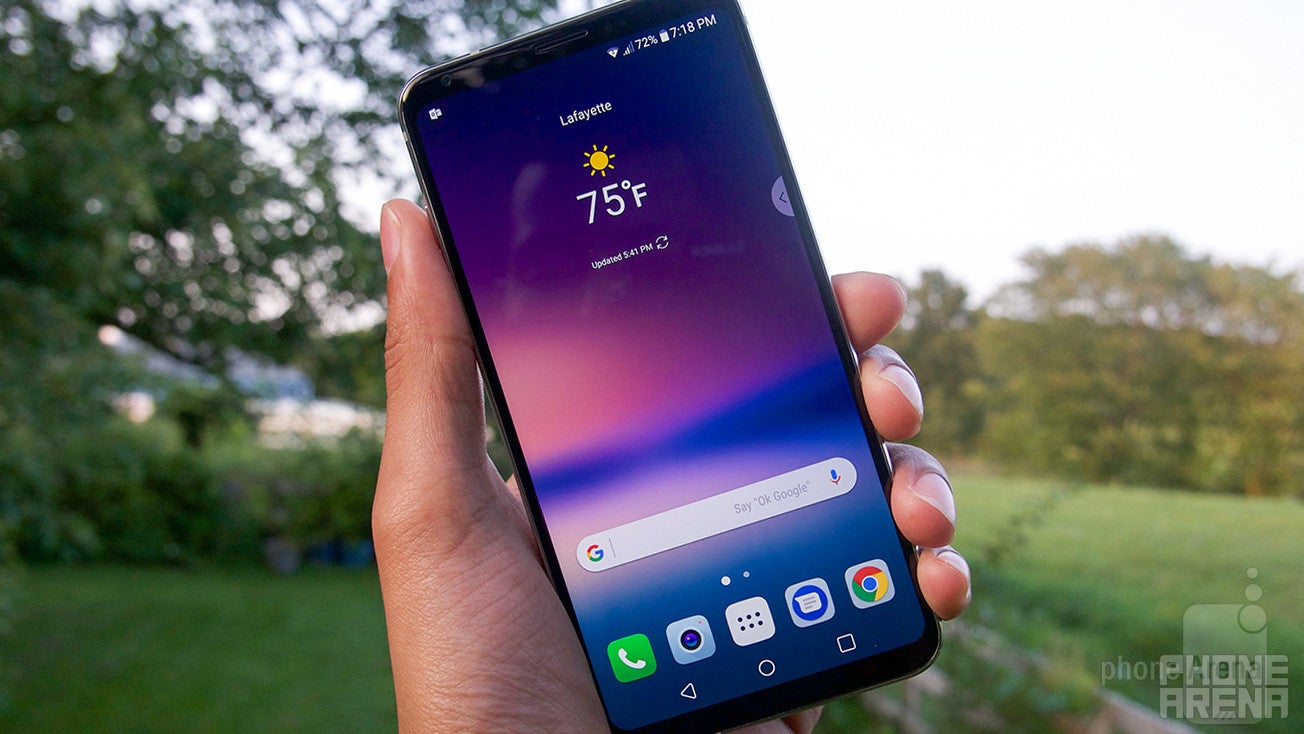
Since this is a preliminary unit, we won’t be putting it through the deeper tests reserved for reviews, but initial impressions of this display are very good. Using the same 18:9 ratio as the G6, the larger, 6-inch screen packs a 2880 x 1440 (QHD+) resolution into this vibrant OLED display. 82% screen ratio is pretty nice to have, especially when details and colors look as good as they do here. Watching videos is an absolute joy on this screen; details are crisp and colors are vibrant yet they avoid over-saturation.
Interface
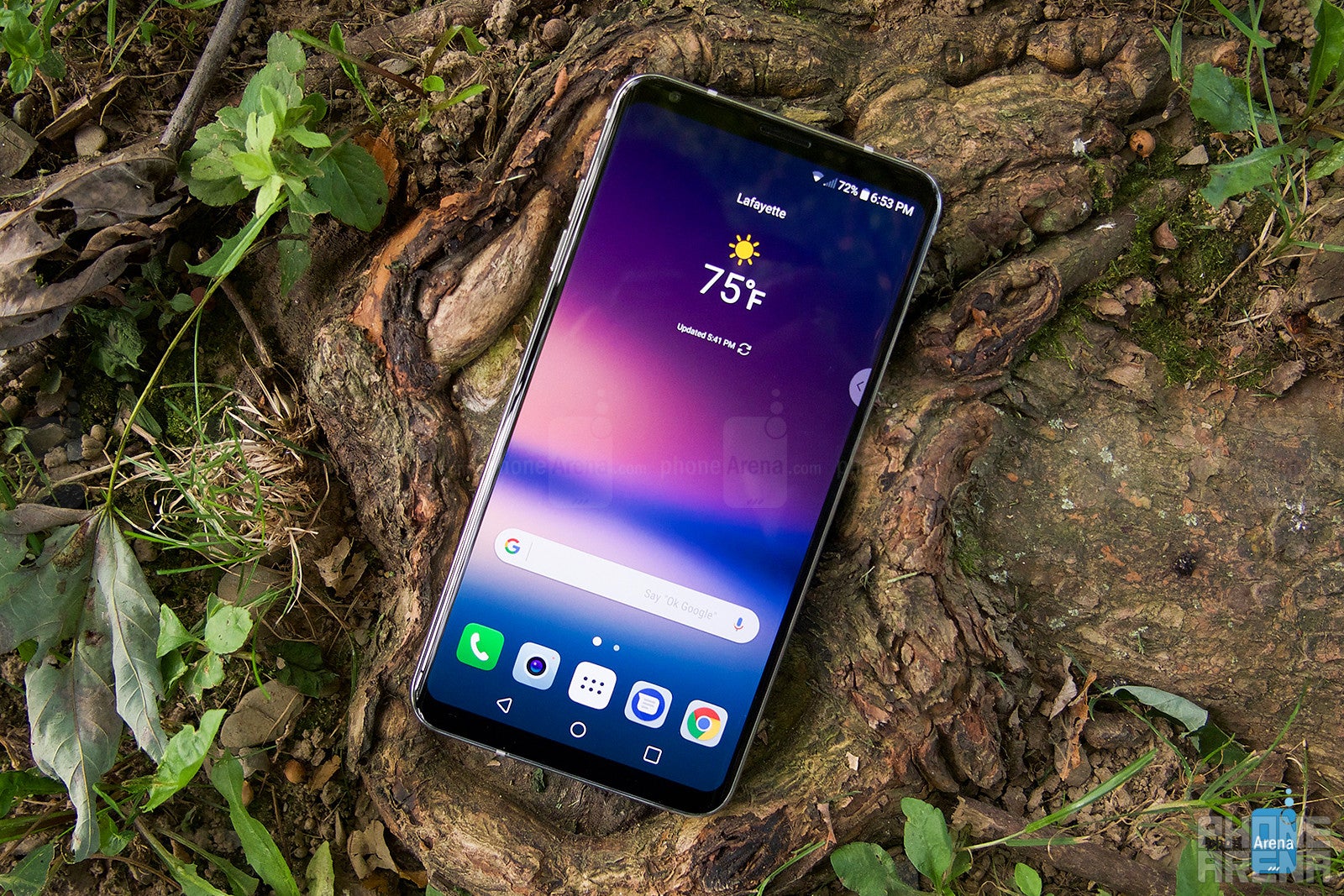
The V30 maintains LG’s stature as a company that loves to give you options, but knows how to keep them organized and accessible; without that piece, most people would rather not have the options at all. Customization doesn’t stop at just themes, but also includes OS tweaks which offer custom navigation buttons, unique locking/unlocking methods, and also a new feature called Floating Bar. This is the spiritual successor to the V20’s secondary display, and functions like other Android badges. A translucent half-circle sits on whichever edge you place it, and when tapped reveals a carousel of shortcuts for contacts, apps, music controls, screenshot/gif capture, screen markup functions, and more. This is a great replacement for the complimentary display, as the optional feature is easy to place and flick out of your way when necessary, but also simple and intuitive to use, as we find LG’s menu systems to typically be. Some may miss the dedicated screen for this function, but these days you need all the screen you can get, and it’s tough to waste face real estate on a static screen. We wouldn’t mind some gestures for the fingerprint sensor though. Since it’s already on the phone's back, a page scrolling gesture would be a nice option. But alas, not even the mighty Google Pixel could deliver fully on that, for some reason.
Overall, we enjoy LG’s aesthetic and operating nuances, as it teaches manufacturers important lessons in the tasteful and functional melding of manufacturer UI’s and the Android OS.
Face and Voice Unlock
In addition to the snappy fingerprint sensor, LG’s giving you two more easy ways to get into your device: facial recognition and voice recognition. While both seem to promptly grant you admission when set up, training the voice recognition took a few tries. Facial recognition was set up in one go, but voice requires a very consistent 4 recordings; there’s little if any room for vocal variation on the same words. We’ll see how this technology progresses, but it’s obviously not recognizing words, but rather sound waves. When the function is setup though, it makes for a nice, easy way to wake up the screen without having to grab your phone. All of these work in tandem pretty nicely, actually. Say your hot phrase to wake up the phone and see if you have any notifications. If so pick up the phone, and less than a second after raising it, your face has been recognized and your phone unlocked. That’s just how convenient and capable we found these functions, almost every time we picked up (or didn’t pick up) the phone. Another great example of LG’s savviness in putting together functions without having them step on each other’s toes, or become redundant.
Processor and Memory
The V30 runs buttery smooth on a Snapdragon 835 paired with four gigabytes of RAM. Storage options are 64 GB and 128, with microSD card expansion up to two terabytes. Spec-wise LG’s hitting all the right notes here, and real-world performance doesn’t disappoint. From the second you lay a digit on the fingerprint sensor, you get an idea for how quickly this phone operates. At this point it’s a good time to remind our readers (and ourselves) that this is still a preliminary device. Nothing may change after this version, or something significant can. That said, it would be hard to fathom this device slowing down. Multitasking flows like water, and apps open in a flash. To touch back on interface for a brief moment, we like how well things flow on the V30. When manufacturers have top of the line specs, often they can slow the device down a bit or make navigation somewhat jarring, all by making animations too slow, or abrupt, respectively. For us, LG’s design language hits the so-called goldilocks zone with regards to UI motion and pleasing animations – something that even if done semi-unwittingly, is nonetheless appreciated.
Camera and Video
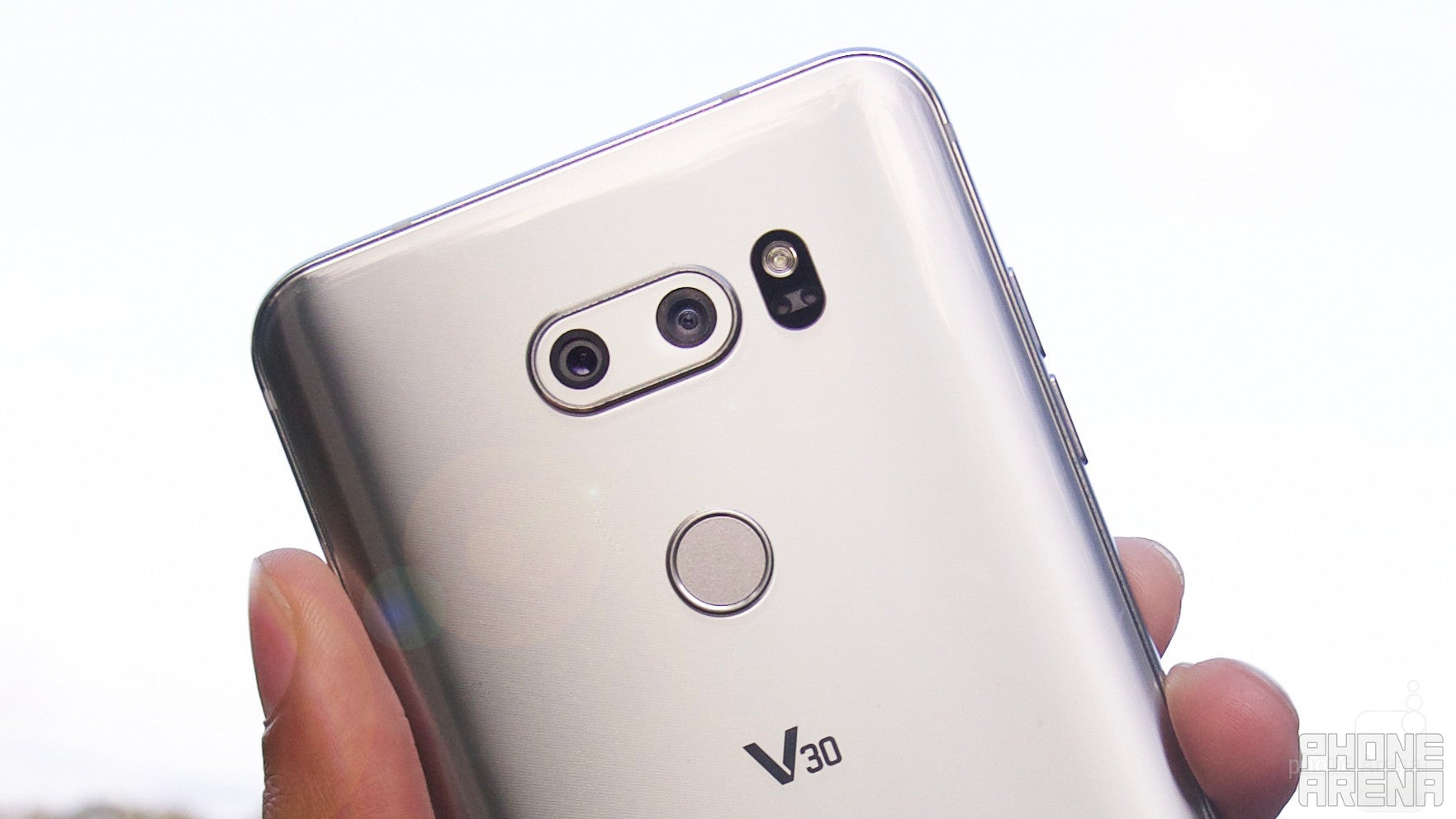
If there’s one area in which LG wanted to create some distance between its past phones and competitors, that would be the camera. Starting with hardware, we have LG’s always improving dual camera setup – something the company’s been doing since before it was really cool – with 16-megapixel regular and 13-megapixel wide-angle lenses packing f/1.6 and f/1.9 apertures, respectively. Wide angle, and the ease of switching between that and the regular lens were always features we liked, but the fish-eye like distortion was quite prominent. LG has cut down this distortion to almost none, doing so through hardware, and not software. Presumably, the slight step down in angle width from 135 degrees to 120 helps to produce such pleasing results. This encourages us to use the wide-angle lens much more freely, as the resultant photo compositions are great for a variety of situations – many of which would typically require a partial panoramic shot. Panoramas can be a pain, as they’re time consuming and, depending on the software, can be tough to capture. Wide angle requires only a simple tap; pretty darn cool, and useful.
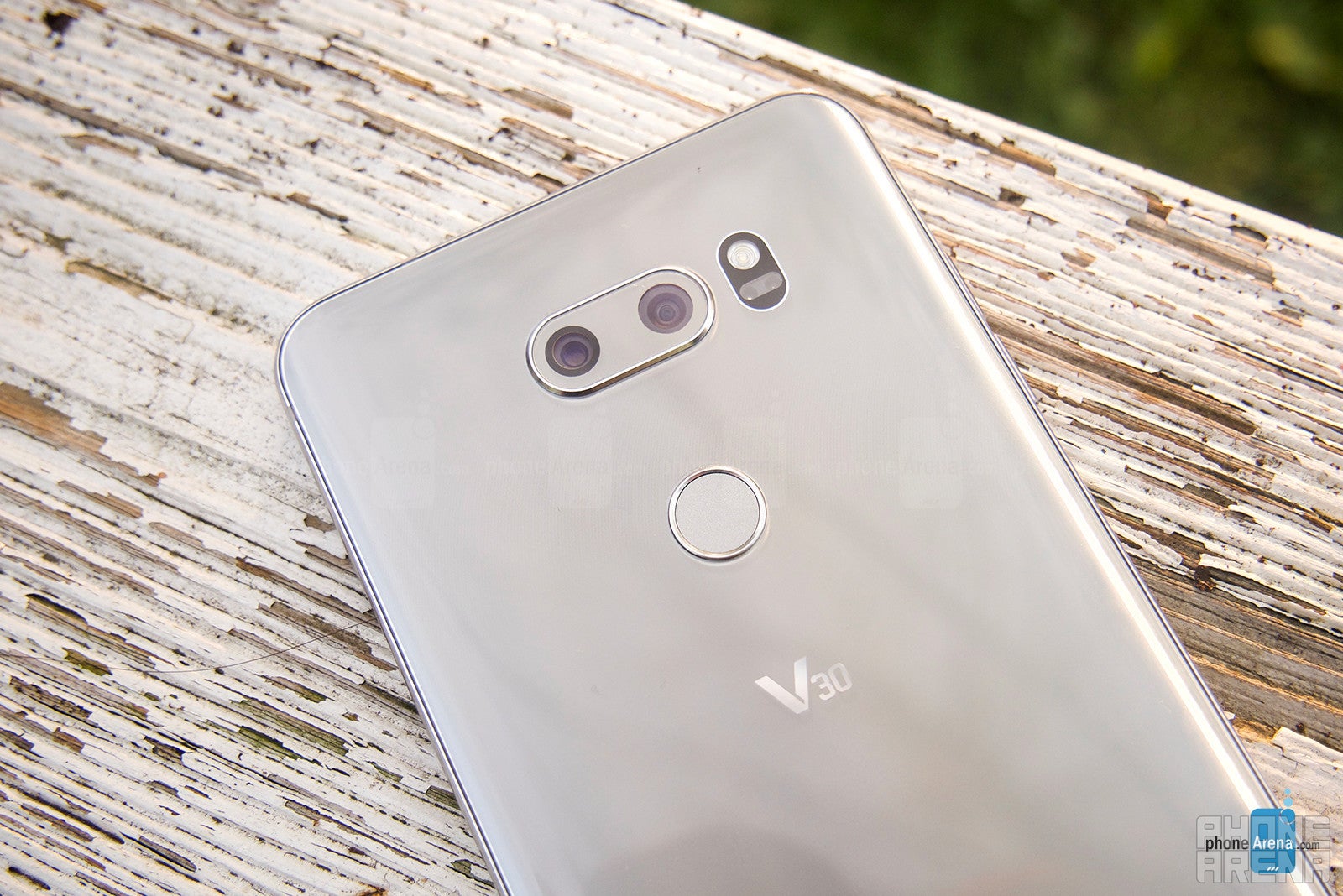
Unfortunately, one of the most enticing new camera features was not enabled on our preview unit. A shooting mode known as GRAPHY (at least at the time of this writing) will allow users to scroll through a gallery of photos – which includes those taken by professionals – and select an image from which the camera’s settings are extracted, and applied to your camera so that you too may shoot like a pro. Sounds pretty sweet, and we have confidence that LG will execute on a user-friendly interface for this function.
Image Quality
Details are sharp, and HDR shows strength on defining objects in shadows – blades of grass in a sunny meadow, for instance – though brighter areas can sometimes be over-sharpened and over-exposed. Although we prefer more detail to less, everyone prefers more life-like photos. And blades of grass in the shadows will deliver on this, but fluffy clouds in the sky, less so. Colors look pretty nice in most instances, but shots in bright/sunny lighting will often wash out the vibrancy of colors, though solid detail remains. Its strength in detail capture is especially appreciated in macro or low-light shots, as it never seems to miss a thing.
Speaking of low light, the V30 appears to be an excellent performer in this regard. The aforementioned proclivity in detail capture remains one of its best attributes even in low-light scenarios. Limiting noise, and pulling out vibrant and accurate colors from the shadows, the f/1.6 aperture regular lens proves, at least early on, to be a contender for best flagship low-light performer, and we’re excited to see how it stacks up in final comparisons
Video
Significant additions to the camcorder are also in order, but only some of them were present on our preview unit. All of which fall under the banner of Cine Video, which is the broader suite of functions offered for video recording. This suite includes; Point and Zoom, which locks focus on a specific part of the screen and allows the user to zoom in on it smoothly; Cine Effect, which contains 15 different movie-genre-inspired filters to film with; Cine Log, which facilitates easy editing in programs like Adobe Premiere; and Video Studio, an on-board editing software which allows you to work with multiple photos and videos, as well as add after-effects to your mobile masterpiece.
Functions related to editing were unfortunately not present on our unit, so stay tuned for our full review on these, as LG undoubtedly put some work into them. Cine Effects are little more than camera filters, but perhaps with the proper editing software they may be of some use. Point and Zoom was a lot of fun to play with, though. The zoom is smooth no matter what speed you use, and it simply works. Just tap an area on the screen, and the zoom slider will bring your subject closer and closer until it’s in the center of the frame. This can certainly provide a fun accent to your quick snaps, or add another level of drama to your movies. Keep in mind, this is not a tracking autofocus function, but rather a function to zoom in on a specific part of the screen. Tracking autofocus is available, though only in FHD or HD – not 4K.
Audio
LG’s also added some audio treats in the form of a Hi-Fi Quad-DAC. While the speaker on the device is a bit anemic, plugging in a pair of good headphones will make you feel justified for spending on that extra money on your favorite pair. Sound quality without the Quad-DAC enabled is still quite good, even and balanced, albeit a bit quiet. Tapping the Hi-Fi toggle in quick settings immediately brings energy and virulence to all aspects of your music. Essentially, keep Hi-Fi off if you’re on a plane or want to listen quietly, but still enjoyably. If you’re ready to have a one-man dance party and lose yourself in the soundwaves, then flip the switch on the Quad-DAC. Some sound profiles and adjustment knobs do exist for EQ, but we found the stock settings for Hi-Fi to be the best configuration.
Expectations
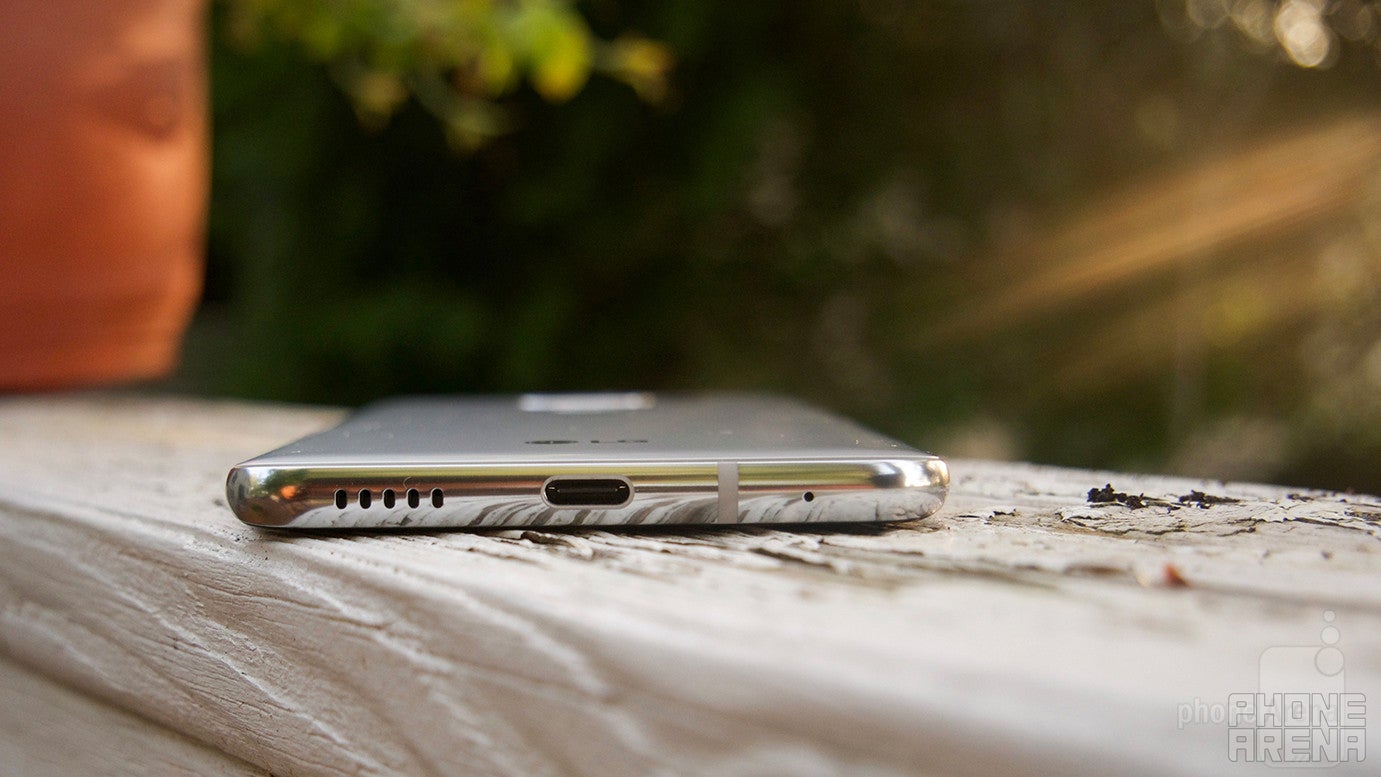
R.I.P LG’s G6. Seriously, what does anyone need it for at this point? The V30 is a more stylish device that improves on every aspect of the G6 and V20, and in doing so it has become a more mainstream hybrid of the two. Gone is the secondary display of the V20, replaced with a functional software version, and improved is the wide-angle camera, which now captures very little distortion. Throw in a Snapdragon 835 with 4 gigs of RAM, LG’s potent and smooth UI, a gorgeous infinity display, and sprinkle some extra camera and video goodies on top, and you have the makings for a flagship device, which stands on its own. Now all LG needs to do is get the V series on the G series’ release schedule so that it may valiantly compete with its rightful competition instead of awkwardly fighting for the dominance that Samsung’s Galaxy S8 has already earned. Still, it looks like the V30 may have a good seven to eight months to turn some heads, and steal some fans. If the camera’s issues with bright scenes get ironed out, it may even be worthy of attention from some staunch iPhone loyalists. But alas, this is only a preview unit, and October is coming.
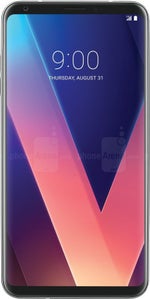
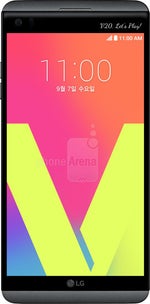
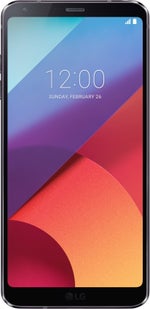
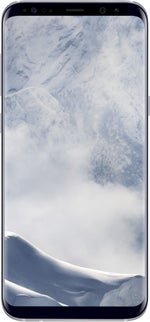




















Things that are NOT allowed: